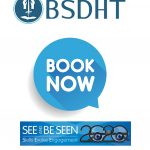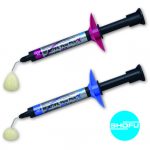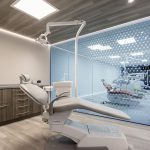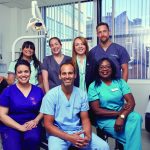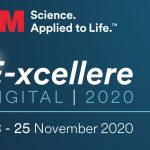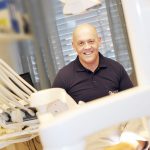An ortho-restorative case study by Dr Ivan Yanchev
A 33-year-old female presented to the practice (a dentist friend of mine) asking about the possibility of treatment with removable orthodontic appliances before her wedding later the same year. She was seeking an improvement in her smile aesthetics, focused especially on the canines and centrals. She had already visited an orthodontist and been offered dual-arch fixed orthodontic appliances with an estimated treatment time of 1-1.5 years, but she sought a faster solution.
During the initial appointment, the benefits of comprehensive orthodontic treatment were reiterated. We also discussed what could be achieved with removable appliances, including relief of the anterior crowding and better alignment of the canines and centrals. Furthermore, the specificity of both the Inman Aligner and ClearSmile Aligners were explained and the need for retention emphasised. The possible complications were also detailed – black triangles, increased overbite and gum recession.
Assessment
A comprehensive orthodontic assessment was completed (Table 1). General evaluation revealed a healthy individual, a non-smoker with no known disorders or allergies. The patient advised of known parafunction occurring at night, as identified by her partner. She also admitted to transient periods of consuming acidic and carbonated drinks.
The patient was, of course, a regular dental attender. Good oral hygiene was recorded, with low or no caries activity. However, extensive tooth wear was identified in both jaws, especially on the sides where there were grade III erosions with varying grades of dentine exposure. The bruxism had caused drastic occlusal changes, with contact points disappearing. With no treatment, the Class II malocclusion would only worsen.
Table 1:
| Skeletal |
Mild Class II |
| FMPA |
Average |
| Lower Face Height |
Average |
| Facial Asymmetry |
None |
| Soft tissues |
Competent lips, high lip line, average mesiolabial angle |
| Overjet |
1.5mm |
| Overbite |
40% overlap of incisors |
| Crossbite |
None |
| Displacement on closure |
None |
| Incisor Relationship |
Class I |
| Molar relationship |
Right: Class II ½ unit |
Left: Class II ½ unit |
| Canine Relationship |
Right: Class II ½ unit |
Left: Class II ½ unit |
| Teeth Present |
87654321 |
12345678 |
| |
7654321 |
1234567 |
| Centrelines |
Coincident |
Table 2:
| Problem List |
| Mild skeletal Class II base
Proclined lower incisors
Mild anterior crowding |
| Ideal Treatment – Aims: |
| Correction of Class II relationship of molars and canines
Correction of anterior crowding
Align upper canines
Retrocline lower anterior teeth to close spaces |
| Compromised Treatment – Aims: |
| Accepts no treatment of Class II molar and canine relationship
Correction of anterior upper crowding is chief aim
Align upper canines and retrocline lower anteriors if possible |
Treatment plan
Following an extensive discussion about the advantages and disadvantages of the two appliances with the patient and IAS clinical mentors, a treatment plan was formulated. The Inman Aligner would be used to align the upper centrals, while ClearSmile Aligners would follow to align the canines. ClearSmile Aligners were indicated for the lower arch. A conversation was also had with the patient about further treatment that may be required post orthodontics. She was keen to restore the damage caused by tooth wear and was aware of the complexity of restorative treatment given her collapsing bite.
An digital impression was taken using a 3Shape scanner. An Archwize™ digital crowding calculation suggested that 1.4mm of space was required in the upper arch and 0.5mm in the lower to enable alignment. We planned to perform another Archwize™ calculation following the initial alignment treatment in order to prepare for the ClearSmile Aligners. Upper and lower retention would be provided with bonded wires and Essix retainers.
For the restorative phase, we planned to follow the Align, Bleach and Bond (ABB) concept with tooth whitening and composite edge bonding. Porcelain veneers were also indicated to treat areas of more significant wear. Digital Smile Design (DSD) was used to estimate the volume of tissue that required restoration, especially regarding the anterior teeth. It showed some tooth wear on the incisal edges and a small amount of enamel missing from the buccal aspects. Due to most of the tooth structure still being sound, the patient’s age and the financial implications, the patient’s first choice was composite edge bonding for most of the teeth.
As such, we planned composite edge bonding for UR4-UL5, LL1, LR1, LL4-LL6, LR4-LR6. The Dahl technique would be used to increase the occlusal vertical dimension and enable a diagnostic wax-up of the side segments for designing the new occlusal surface anatomy. We would then be able to “copy” this new design in the patient’s mouth tooth-by-tooth, providing longevity and stability of the treatment result, while also helping to correct the slight Class II occlusion. Crown therapy could therefore be provided for UR5, UL6 and LL6.
Orthodontic treatment provision
The upper Inman Aligner and first lower ClearSmile Aligner were fitted. Half of the proposed interproximal reduction (IPR) was performed during the first appointment, with the rest to be delivered progressively throughout treatment during fornightly appointments.
During the four weeks we close for summer, the patient cracked her lower aligner. As she reverted to wearing the previous aligner in the sequence, only a little relapse occurred. Her wedding was also postponed, so she was no longer in a rush to complete treatment. Even so, we replaced the next aligner relatively quickly and treatment continued.
Once upper alignment with the Inman Aligner had reached its maximum, a new digital impression was taken and the finishing aligners ordered from the IAS laboratory to align the canines. The patient continued to wear the final lower ClearSmile Aligner even once lower alignment was complete in wait for the upper treatment to conclude also. At this point, final digital impressions of the upper and lower arches were sent to the lab for the fabrication of retainers.
Restorative treatment provision
Initially, the incisal edges of the upper 3-3 were built up with composite according to the DSD. Wire retainers were then fixed to both arches and the occlusion was checked, showing direct contact of the lower teeth with the wire of the uppers. The horizontal platforms were therefore built up to lift the bite, before the incisor and canine guidance was tested using articulating paper and adjusted as necessary. A strong contact was established by the canines and a lighter contact by the incisors.
The patient was very satisfied by her smile aesthetics. She wanted to take a break from treatment as it was nearing the Christmas holidays. To stabilise the bite, composite was placed on the molars and all the premolars in the upper jaw. She was feeling fine after several days with her new ‘bite’.
This phase of treatment was finished by building up the upper premolars with composite (Filtek Supreme, 3M) and polishing the anterior restorations, followed by delivery of oral hygiene instructions and demonstrations with Superfloss.
Conclusion
It’s important to make patients aware of the potential effects of the Dahl technique regarding it will close the occlusal interference, which we achieved in this case with over-eruption. As the patient wanted to stop treatment for a while, further restorative work is currently on hold, but the patient has been left in a condition that should protect her teeth from wear in the meantime.
Case images
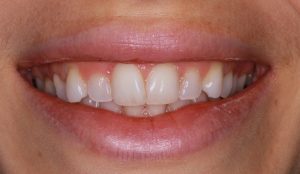
Figure 1 – pre treatment smile
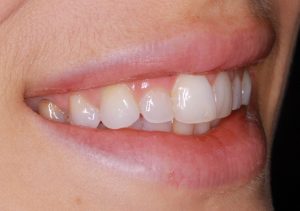
Figure 2 – pre treatment right view
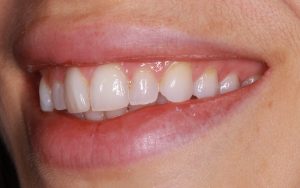
Figure 3 – pre treatment left view
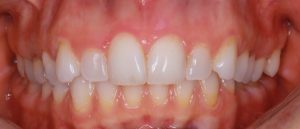
Figure 4 – pre treatment anterior
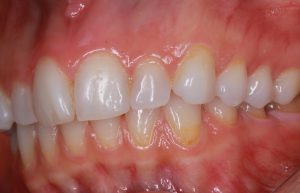
Figure 5 – pre treatment left lateral
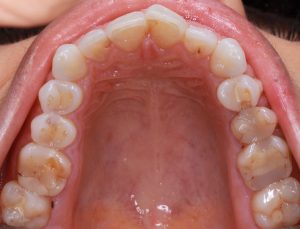
Figure 6 – pre treatment upper occlusal view
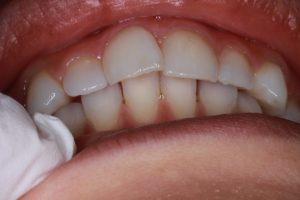
Figure 7 – pre treatment chin up view
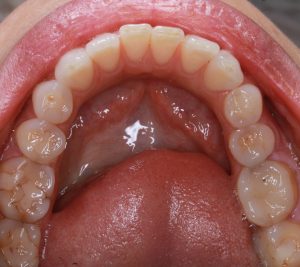
Figure 8 – pre treatment lower occlusal
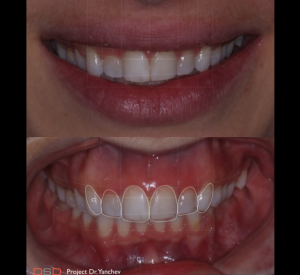
Figure 9 – DSD process
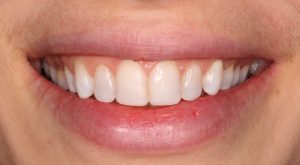
Figure 10 – post treatment smile
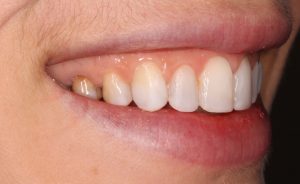
Figure 11 – post treatment right view
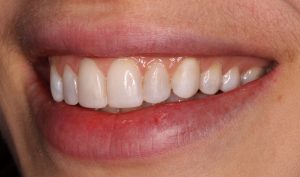
Figure 12 – post treatment left view
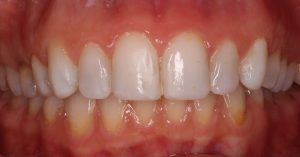
Figure 13 – post treatment retracted anterior
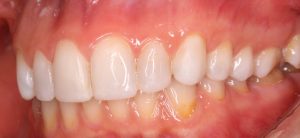
Figure 14 – post treatment left lateral view
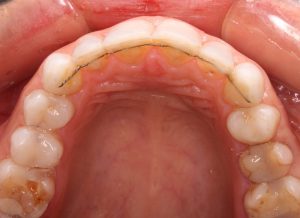
Figure 15 – post treatment upper occlusal view
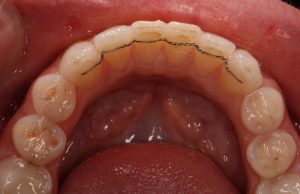
Figure 16 – post treatment lower occlusal view
For more information on upcoming IAS Academy training courses, including those for the Inman Aligner and Aligner system, please visit www.iasortho.com or call 01932 336470 (Press 1)
Author bio:
Dr Ivan Yanchev is a dentist practising in Norway. He graduated from the Medical University of Sofia, Bulgaria in 1997 and gained his Masters in Dentistry in 2005. He has also completed various postgraduate education in implant prosthetics, as well as several resto-orthodontic courses presented by IAS Academy.




